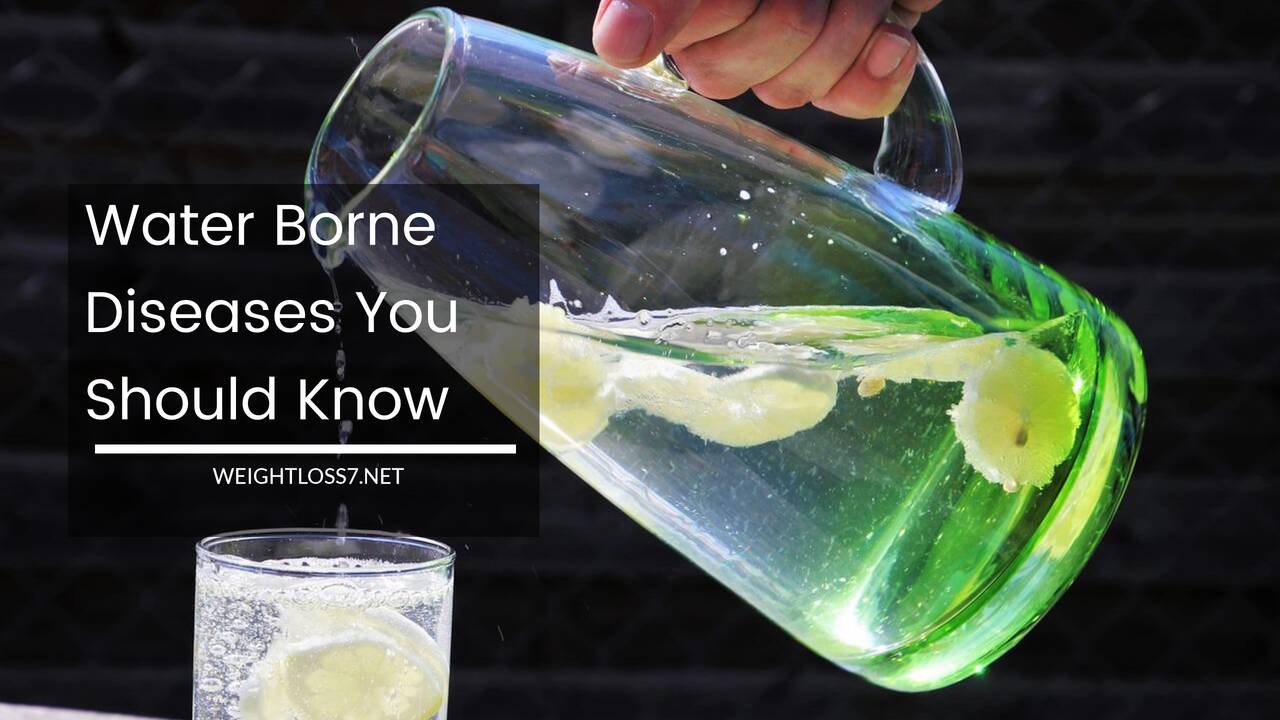Water Borne Diseases You Should Know

The term “water-borne diseases” may seem misleading: diseases that are water-borne are not actually born in the water, but they are transmitted through water.
Most water-borne diseases are spread when the fecal matter of an infected person or animal gets into a water supply (or freshwater lake, reservoir, or pond) and is then ingested by another person or animal.
People can become infected by drinking, swimming or bathing in, and preparing food that has been washed with contaminated water.
Infections can range in severity from having no effect (many people can become infected and never have symptoms) to being deadly.
Common Water-Borne Diseases
| Disease | Pathogen | Symptoms | Causes | Incubation |
|---|---|---|---|---|
| Adenovirus Infection | Adenoviridae virus | Vary depending on which part of the body is infected | Drinking contaminated water | 5-8 days |
| Amebiasis | Entamoeba histolytica parasite | Diarrhea, stomach pain, and stomach cramping | Fecal matter of an infected person (usually ingested from a pool or an infected water supply) | 2 to 4 weeks |
| Campylobacteriosis | Campylobacter jejuni bacteria | Chicken, unpasteurized milk, water | 2 to 10 days | |
| Cryptosporidiosis | Cryptosporidium parasite | Stomach cramps, dehydration, nausea, vomiting, fever, weight loss | Fecal matter of an infected person (can survive for days in chlorinated pools) | 2 to 10 days |
| Cholera | Vibrio cholerae bacteria | Watery diarrhea, vomiting, and leg cramps | Contaminated drinking water, rivers and coastal waters | Two hours to 5 days |
| E. Coli 0157:H7 | Escherichia coli bacteria | Diarrhea (may be bloody), abdominal pain, nausea, vomiting, fever, HUS | Undercooked ground beef, imported cheeses, unpasteurized milk or juice, cider, alfalfa sprouts | 1 to 8 days |
| Giardiasis | Giardia lamblia parasite | Diarrhea, excess gas, stomach or abdominal cramps, and upset stomach or nausea | Swallowing recreational water contaminated with Giardia | 1 to 2 weeks |
| Hepatitis A | Hepatitis A virus | Fever, fatigue, stomach pain, nausea, dark urine, jaundice | Ready-to-eat foods, fruit and juice, milk products, shellfish, salads, vegetables, sandwiches, water | 28 days |
| Legionellosis | Legionella pneumophila bacteria | Fever, chills, pneumonia, anorexia, muscle aches, diarrhea and vomiting | Contaminated water | 2-10 days |
| Salmonellosis | Salmonella bacteria | Abdominal pain, headache, fever, nausea, diarrhea, chills, cramps | Poultry, eggs, meat, meat products, milk, smoked fish, protein foods, juice | 1-3 days |
| Vibrio Infection | Vibrio parahaemolyticus, Vibrio vulnificus bacteria | Nausea, vomiting, headache (a quarter of patients experience dysentery-like symptoms) | Raw shellfish, oysters | 1 to 7+ days |
| Viral Gastroenteritis | Calicivirus virus | Diarrhea, vomiting, nausea, cramps, headache, muscle aches, tiredness, slight fever | Water, ready-to-eat foods (salad, sandwiches, bread) shellfish | 24 to 48 hours |
As per the Arizona Department of Health Services, there are several diseases that are considered water-borne. Among these are E-Coli, Viral gastroenteritis, Hepatitis A, and Cholera.
E-coli
E-coli infection occurs when fecal matter is present in water and finds its way into the body, usually through swallowing the contaminated water.
This disease can vary from mild to deadly: most fatal cases occur in children and the elderly. Symptoms include bloody diarrhea, abdominal cramping, vomiting, and respiratory problems. E-coli is sometimes described as severe food poisoning.
Gastroenteritis
Viral gastroenteritis is a disease that attacks the intestinal system. Commonly referred to as “the stomach flu,” this illness causes vomiting, diarrhea, abdominal cramping, and occasionally fever.
While the stomach flu can be spread in a variety of ways, drinking contaminated water offers an easy and fairly common route of transmission.
Hepatitis A
Hepatitis A, like all the hepatitis diseases, attacks the liver. It is spread when a person ingests food or water that has been contaminated with fecal matter.
According to the Center for Disease Control, only a microscopic amount of fecal matter needs to be present in order for Hepatitis A to take root. People who become infected usually experience nausea, diarrhea, extreme fatigue, jaundice, muscle pain, and abdominal pain, especially near the liver.
Cholera
Cholera is an infection of the small intestines caused by drinking water or eating food that has been contaminated with the fecal matter from an infected person (even one who has no symptoms).
Cholera can be dangerous because it causes diarrhea and vomiting, both of which can lead to extreme dehydration. While the dehydration can often be successfully treated with rehydration salts, severe cases can lead to death.
According to the World Health Organization, up to 120,000 people die of cholera each year, especially in countries with inadequate sanitation.
Prevention of Water-Borne Diseases
Some water-borne diseases, such as Hepatitis A and Cholera, can be prevented by immunization.
This makes vaccinating important for anyone who is traveling or moving to an area with a high incidence of these diseases or to areas that are prone to outbreaks.
Other ways to reduce the chance of getting a water-borne illness include: not drinking water in areas with poor sanitation (bottled water is usually okay), not swimming or bathing in lakes and other fresh waters, and using devices (such as UV filters) to purify water.
Other ways to eliminated water-borne diseases include purifying the water with chemical disinfectants and boiling the water before consumption.
Water-borne illness can be serious, and the risk of contracting them should never be taken lightly. However, water-borne illnesses do offer some hope in that they are often preventable.
Getting vaccinated, knowing locations of outbreaks, and thinking before drinking can all reduce the chance of infection.

















